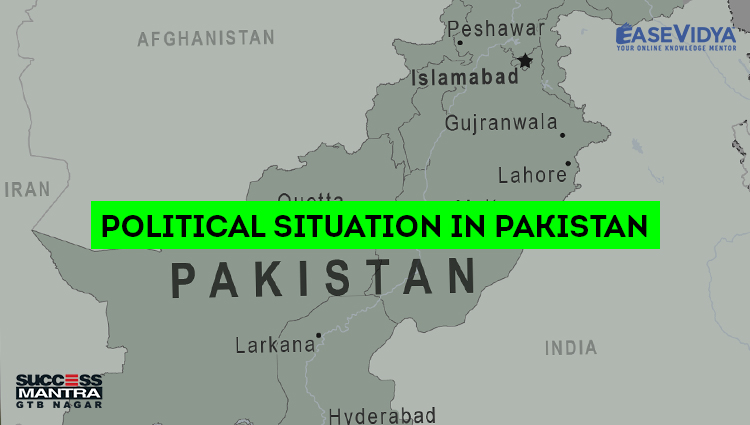
POLITICAL SITUATION IN PAKISTAN
POLITICAL SITUATION IN PAKISTAN
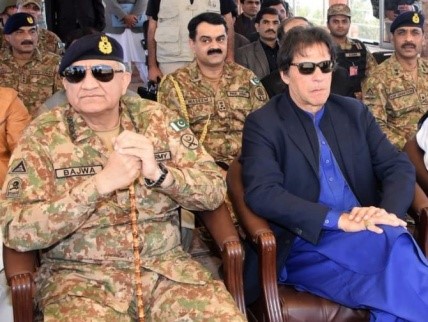
The politics of Pakistan takes place within the framework established by the constitution. The country is a federal parliamentary republic in which provincial governments enjoy a high degree of autonomy and residuary powers. Executive power is vested with the national cabinet which is headed by the Prime Minister {currently Imran Khan} who works coherently along with the bicameral parliament and the judicature. Stipulations set by the constitution provide a delicate check and balance of sharing powers between executive, legislative, and judicial branches of the government. Whereas, the head of the state is the President who is elected by the electoral college for a five-year term. Arif Alvi is currently the President of Pakistan.
PAKISTAN DEMOCRATIC MOVEMENT 2020
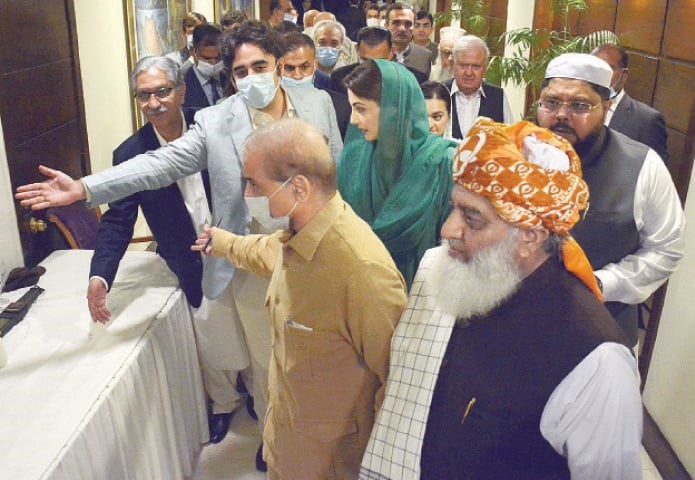
Formed in September 2020, Pakistan Democratic Movement (PDM) is a coalition of 11 political parties against the Imran Khan administration. It is interesting to note that the movement has brought two major but rival political parties of Pakistan together-- PPP and PML. The Pakistan People’s Party (PPP) is led by Bilawal Bhutto and the Pakistan Muslim League (PML) is led by the exiled Nawaz Sharif but is currently headed by his daughter Maryam.
The Pakistan Democratic Movement or PDM is led by Maulana Fazal-ur-Rehman. The coalition was formed from 11 political parties which are as follows: Awami National Party, Awami National Party- Wali, Balochistan National Party (Mengal), Jamiat Ahe Hadith, Jamiat Ulema-e-Islam, National Party-Bizenjo, Pakistan Muslim League (N), Pakistan Peoples Party,Pakhtunkhwa Milli Awami Party, Pashtun Tahafuz Movement, Qaumi Watan Party. These political parties represent Pakistan's entire political spectrum virtually. 'Vote ko izzat do' in Urdu which means 'respect the sanctity of the vote' is the slogan of the PDM.
The PDM claims that the 2018 General Election of Pakistan was rigged by the Pakistani military. The 2018 Pakistani General Election was won by Pakistan Tehreek-e-Insaf party. Former Prime Minister, Nawaz Sharif, in his broadcast speech from London, alleged that the Army Chief Javed Bajwa and the ISI Chief Faiz Hameed installed Imran Khan on the Prime Ministerial post by rigging the 2018 General Elections.
The movement has provided a national platform to the regional parties of Pakistan. The provincial leaders from Balochistan and Khyber Pakhtunkhwa who were previously targeted by the Pakistani Army as they demanded regional autonomy and an end to repression, now have a national platform. As per the Government of Pakistan, the leaders of the political parties who had previously governed Pakistan (the PML-N and PPP) have corruption cases against them. Thus, they have unified together to oust Prime Minister Imran Khan.
REASON OF THE FORMATION OF COALITION OF 11 PARTIES
It is known that Prime Minister Imran Khan is politically isolated and to oust his government, the Pakistani Military must be targeted. PDM has so far managed three rallies in October 2020 (Pakistani Punjab’s Gujranwala on October 18, two days later in Karachi, and in Quetta on October 25), opposing the present Government of Pakistan. Many times in the past, the Pakistani military has manipulated the political parties and their leaders in playing off one against the other. However, with the unification of all the political parties, this manipulation may not work. In October 2020, the PDM organised the protests drawing over 50,000 people. A 'long march' is planned in January next year to oust the present government. The movement has generated political momentum and may trigger significant changes in the administration of Pakistan.
GILGIT-BALTISTAN TO BE THE FIFTH PROVINCE
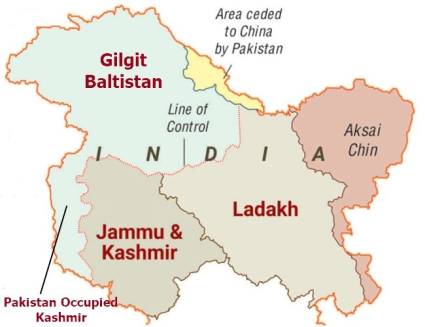
Recently, Pakistan has decided to elevate Gilgit-Baltistan’s status to that of a full- fledged province. Gilgit-Baltistan is one of the disputed territories of India. It is an autonomous region now and with this elevation, it will become the 5th province of the country. Currently, Pakistan has four provinces namely Balochistan, Khyber Pakhtunkhwa, Punjab, and Sindh.
In 1999, Pakistan’s Supreme Court ruled that the people of Gilgit-Baltistan are Pakistani citizens and directed the federal government to start appropriate administrative and legislative measures. In 2009, The Gilgit-Baltistan Empowerment and Self-Governance Order were introduced, whereby the Northern Areas were renamed as Gilgit-Baltistan and the region was given province-like status but without representation in Parliament. In 2015, a committee constituted by the federal government proposed giving Gilgit-Baltistan the status of a province. And recently a new order was introduced which transferred all powers of the Gilgit-Baltistan council to its assembly.
This elevation will lead to adequate representation from the province on all constitutional bodies, including the National Assembly and the Senate. The Government will also start working on the Moqpondass Special Economic Zone (SEZ) under the China Pakistan Economic Corridor (CPEC). SEZs work as an engine for economic growth supported by quality infrastructure complemented by an attractive fiscal package, both at the Centre and the State level, with the minimum possible regulations.
But in response India has held that the Government of Pakistan or its judiciary has no locus standi on territories illegally and forcibly occupied by it. India completely rejects such actions and continued attempts to bring material changes in Pakistan occupied areas of the Indian territory of Jammu and Kashmir. While protesting Islamabad’s efforts to bring material change in Pakistan occupied territories, India held that Pakistan should immediately vacate all areas under its illegal occupation.
PAKISTAN IN FATF'S GREY LIST
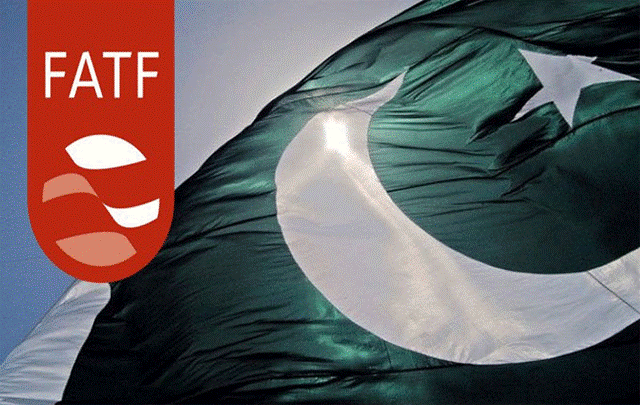
The Financial Action Task Force (FATF) has decided to keep Pakistan on the “Grey- list” till the next review of its compliance to the recommendations in February 2021. The decision was taken after a three-day virtual plenary session. The FATF had issued the 27-point action plan after placing Pakistan on the ‘Grey List’ in June 2018. The action plan pertains to curbing money laundering and terror financing. Recently, the task force’s International Cooperation Review Group (ICRG) noted that Pakistan had complied with 21 points. Since 2007, the ICRG has analysed high-risk jurisdictions and recommended specific action to address the money laundering/terror financing risks emanating from them. At the recent plenary session, the FATF observed that Pakistan has made progress across all action plan items and has largely addressed 21 of 27 action items.
Keeping Pakistan on the ‘Grey List’, the FATF strongly urged Pakistan to swiftly complete its full action plan by February 2021. The points on which Pakistan failed to deliver included its lack of action against the non-profit organisations linked to the terror groups banned by the UN Security Council (UNSC); and delays in the prosecution of banned individuals and entities like Lashkar-e-Taiba (LeT) chief Hafiz Saeed and LeT operations chief, Zaki Ur Rahman Lakhvi, as well as Jaish-e- Mohammad chief Masood Azhar.
While Saeed was sentenced in February 2020 to 11 years in prison for terror financing, the Pakistan government claims that others are “untraceable”. Further, Pakistan was found non-compliant in cracking down on terror financing through narcotics and smuggling of mining products including precious stones. The FATF process also showed concern about the 4,000 names that were on Pakistan’s Schedule-IV list under the Anti-Terrorism Act up to January, but went missing in September 2020. The FATF listing makes it extremely difficult for Pakistan to get financial aid from the International Monetary Fund (IMF), the World Bank and the European Union.
QUESTION (1-5)
Q.1 Which of the following forms of Government is prevalent in Pakistan within the framework established by the constitution?
A. Parliamentary form of Government
B. Federal Republic
C. Presidential form of Government
D. Both A & B: ANSWER
Q.2 Recently Pakistan is going through a political crisis where a Coalition of 11 parties was formed to oust the current Prime minister Imran Khan. What is the name of the coalition of different parties?
A. National People's Movement
B. Pakistan People's Movement
C. Pakistan Democratic Movement: ANSWER
D. Pakistan Democratic Alliance
Q.3 Which of the following parties is not a part of Coalition of 11 parties formed against Imran khan?
A. Awami National Party
B. Pakistan Tehreek-e-Insaf (PTI): ANSWER
C. Pakistan Muslim League (N)
D. Pakistan People’s Party
Q.4 Recently, Pakistan has decided to give a full fledged province status to which of the following disputed regions?
A. Gilgit-Baltistan: ANSWER
B. Balochistan
C. Khyber Pakhtunkhwa
D. Sindh
Q.5 In which of the following places does the FATF headquartered which has kept Pakistan in its "Grey List"?
A. Geneva, Switzerland
B. New York, USA
C. Paris, France: ANSWER
D. Lyon, France












0 Comment